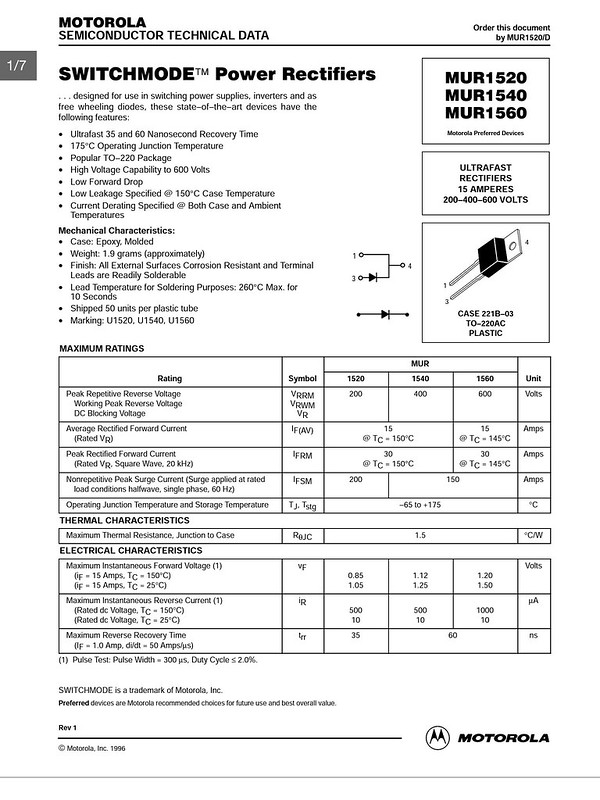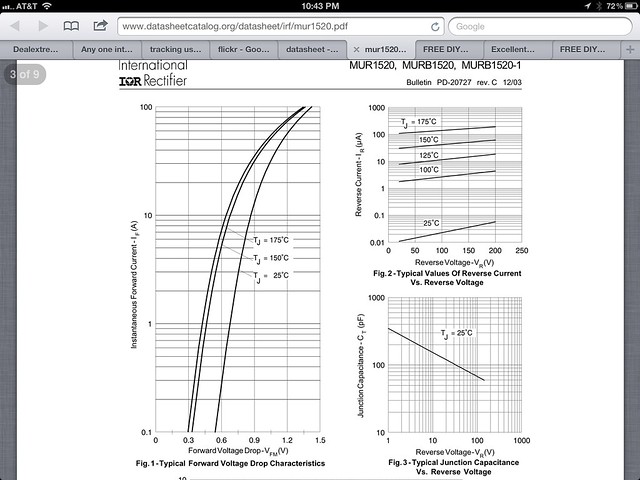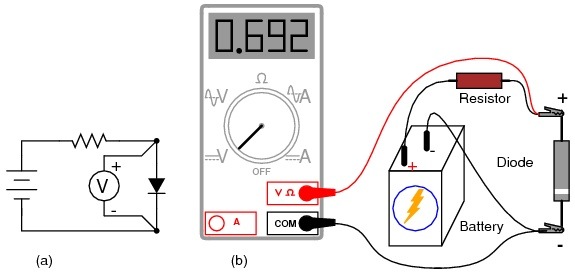Thanks Blord. That explains a lot. My test load has a bunch of round, black diodes with it fat thick leads and looks nothing like that, so when I found a data sheet I wasn't sure that I had found the right one.
I'll post it here in a second...
Motorola MUR1520 Switchmode Rectifier ULTRAFAST RECTIFIERS 200V/15A
It looks like 1.05v - I think.
SWITCHMODE Power Rectifiers
. . . designed for use in switching power supplies, inverters and as free wheeling diodes, these state–of–the–art devices have the following features:
• Ultrafast 35 and 60 Nanosecond Recovery Time
• 175°C Operating Junction Temperature
• Popular TO–220 Package
• High Voltage Capability to 600 Volts
• Low Forward Drop
• Low Leakage Specified @ 150°C Case Temperature
• Current Derating Specified @ Both Case and Ambient Temperatures
Mechanical Characteristics:
• Case: Epoxy, Molded
• Weight: 1.9 grams (approximately)
• Finish: All External Surfaces Corrosion Resistant and Terminal Leads are Readily Solderable
• Lead Temperature for Soldering Purposes: 260°C Max. for 10 Seconds
• Shipped 50 units per plastic tube
• Marking: U1520, U1540, U1560






